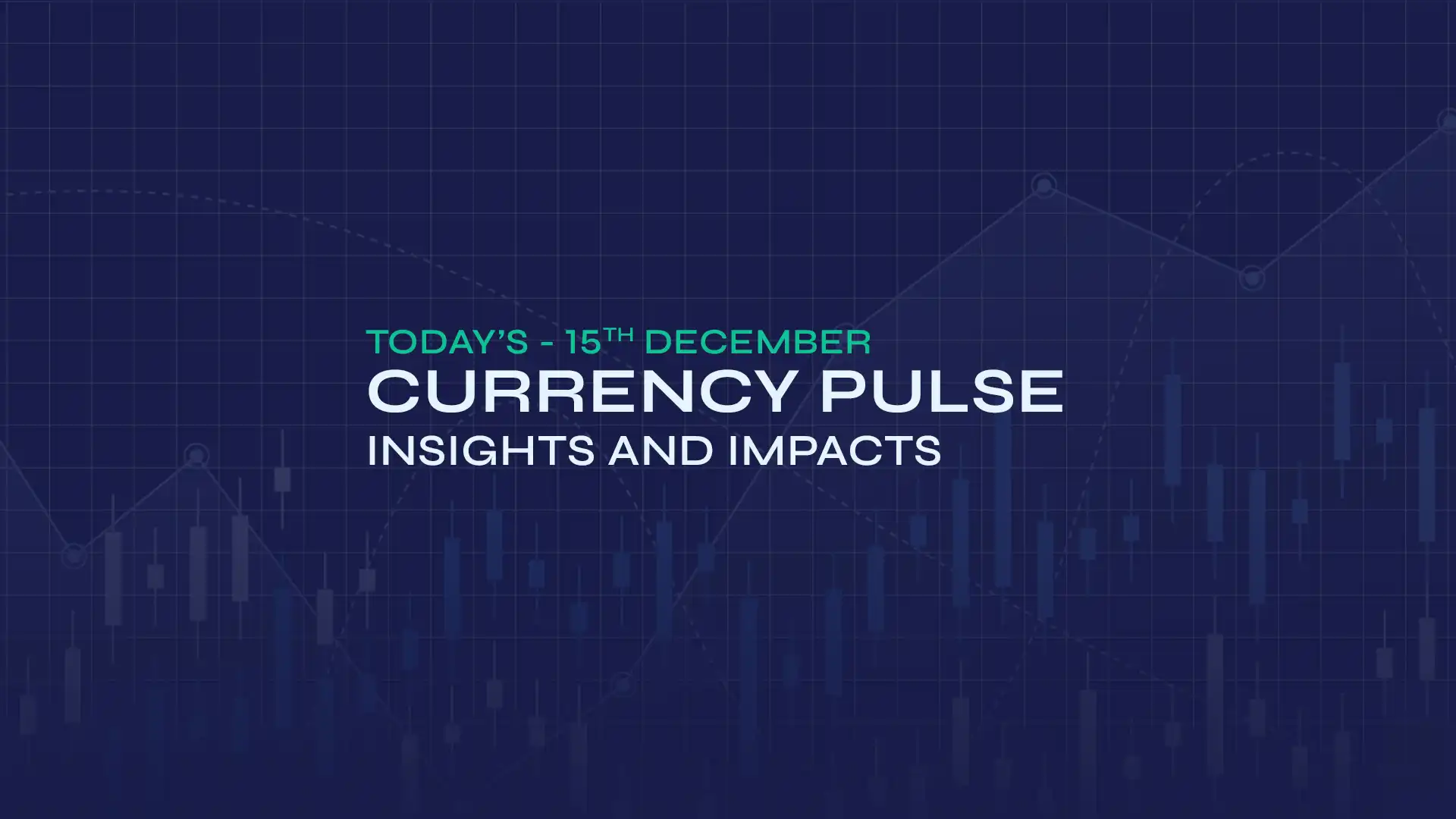On Thursday during the Asian session GBP/USD exchange rate has traded firmly above 1.3550. Traders are watchfully waiting in anticipation of major economic data releases in the US and in the UK. The traders are of the view that the US Producer Price Index (PPI) in July and the Q2 GDP in the UK are some of the data that they should be monitoring. Since investors are seeking clues on the levels of the economic conditions and the monetary policies made by the central bank, this information may or may not influence the market trend and the trend of the pair.
Indications have suggested that the US labour market is weakening and this is why traders believe that the Federal Reserve will soon reduce interest rates. Futures now see a 94% chance of the 0.25% point rate falling September, compared with 85% earlier before the latest inflation figures. To the British pound, the US dollar can depreciate due to this decrease in rates which is expected by marketers. According to the global analysts, the labour market pressure of a slight uptick in unemployment and fallen new jobs may influence forecasts of a more relaxed Fed later this year.
The US Producer Price Index (PPI) report will be released on Thursday and investors are getting prepared. PPI is projected to climb 2.5% on year in July, and the core PPI (minus food and energy) should grow 2.9%. According to the market observers, in case the report indicates more inflation than anticipated, market participants may lessen their bets in Federal Reserve rate cuts and this may cap on the extent that the US dollars can depreciate.
Survey employment data in the Office for National Statistics (ONS) reported that the unemployment rate remained at 4.7% during the three months to June the highest since July 2021 and in line with expectations. The growth of wages without bonuses also remained at 5.0% during the same time. The global trading observers believe that unemployment is at a multi-year peak whereas income enhancement is continuing to swell, and this may influence the interest rate decisions that the Bank of Japan (BoJ) makes.
The GDP report on the second quarter in the UK is being monitored by traders to get hints on the future rate of interest. According to the analysts, in case of slower growth in the economy, this feature may influence the Bank of England (BoE) to rethink its plans regarding the interest rates, despite the high level of inflation. It will assist in providing answers to the question of whether or not BoE may be forced to revise its policies to stimulate the economy without necessarily failing to come through with price increases.
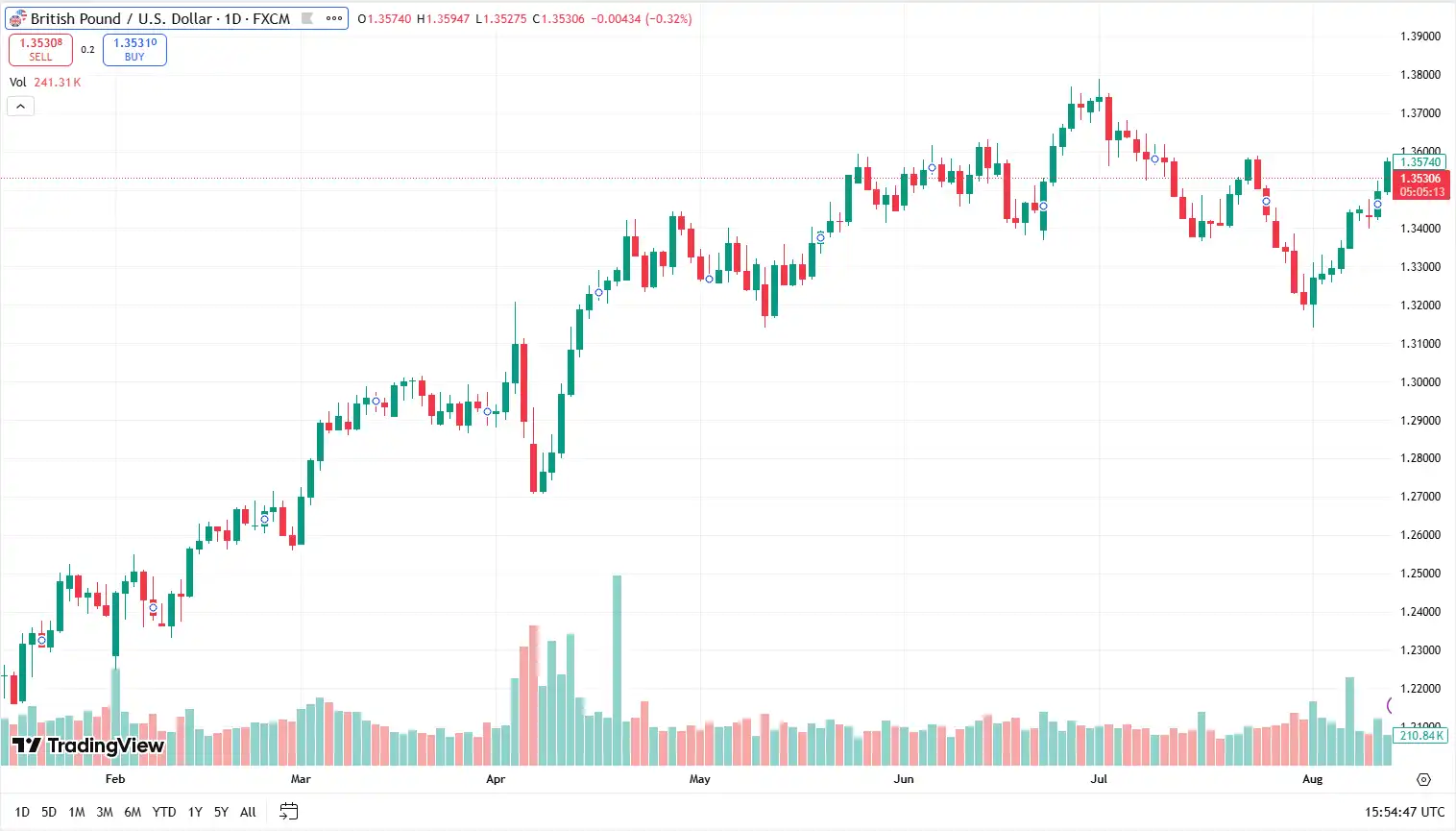
Fed Cut Bets and ECB Pause Speculation Drive EUR/USD Around 1.1700
After the recent downfalls, the EUR/USD exchange rate is trading around the 1.1700 due to the US Dollar experiencing a mild technical comeback. Traders are awaiting important Eurozone economic data in the form of second-quarter Gross Domestic Product (GDP) data that would likely influence market action. Further focus will be on the US Producer Price Index (PPI) data, as well as weekly Initial Jobless Claims, to be issued in the North American time frame. The global marketers believe that these reports may influence the EUR/USD pair leading to the rest of the day.
There is a 94% chance that the US Federal Reserve (Fed) may cut and lower the interest rate by 25 basis points (bps) during their September meeting. It is believed that this shift is based on recent indications of a weakening job market and mild inflation numbers. The investors believe that it may also be possible that a reduction in interest rates by the Fed may lower the US dollar since borrowing could be affordable. But given that some officials are advancing even deeper cuts, a bigger than 50 basis-point reduction does not seem likely.
According to the US Treasury Secretary, Scott Bessent, short-term Federal Reserve (Fed) interest rates ought to be 1.5 and 1.75 percentage points above the present effective interest rate of 4.33%. He suggested that the Fed should commence cutting down the rates by 50 basis points (0.5%) in September to ease the constraints in the economy. According to Bessent, several rate cuts might be necessary to enhance the growth of the economy as the existing rates are too steep. As per the market observers, this is an outright appeal to the Fed to reduce the cost of borrowing as fast as it can.
The US President, Donald Trump, believes that interest rates should be at the level of 1%, which should be observed by the Federal Reserve. He said there are three or four percentage points that should be below where it is at the moment. When Trump termed interest rates as merely a paper calculation, he insinuated that interest rates are abstractions that can translate into differing levels. The investor’s believe that Trump's comments align with the belief of over many years that the economy is boosted by reduced rates applying to interest burden on purchases by individuals as well as firms.
The EUR/USD pair gained as the European central bank (ECB) is expected to end its one-year easing process in July when it makes an eighth rate cut across the board to push its borrowing costs to the lowest rate since November of last year. However, traders are still expecting another rate cut on or before the year ends. As the US dollar weakened amid speculation of rate cuts in the Federal Reserve after the release of weaker US economic figures, the euro became stronger, in part because of the prudent policy of the ECB and the hope it would improve the tension between the US and Russia. The investors believe that this situation gave positive momentum to the EUR/USD which conversely brought the pairs at around 1.1700. As the market shifts towards expected inflation and economic figures which are to guide the future adjustments in the cost of borrowed funds, traders are now looking to the ECB to stop rate cuts in the near future.
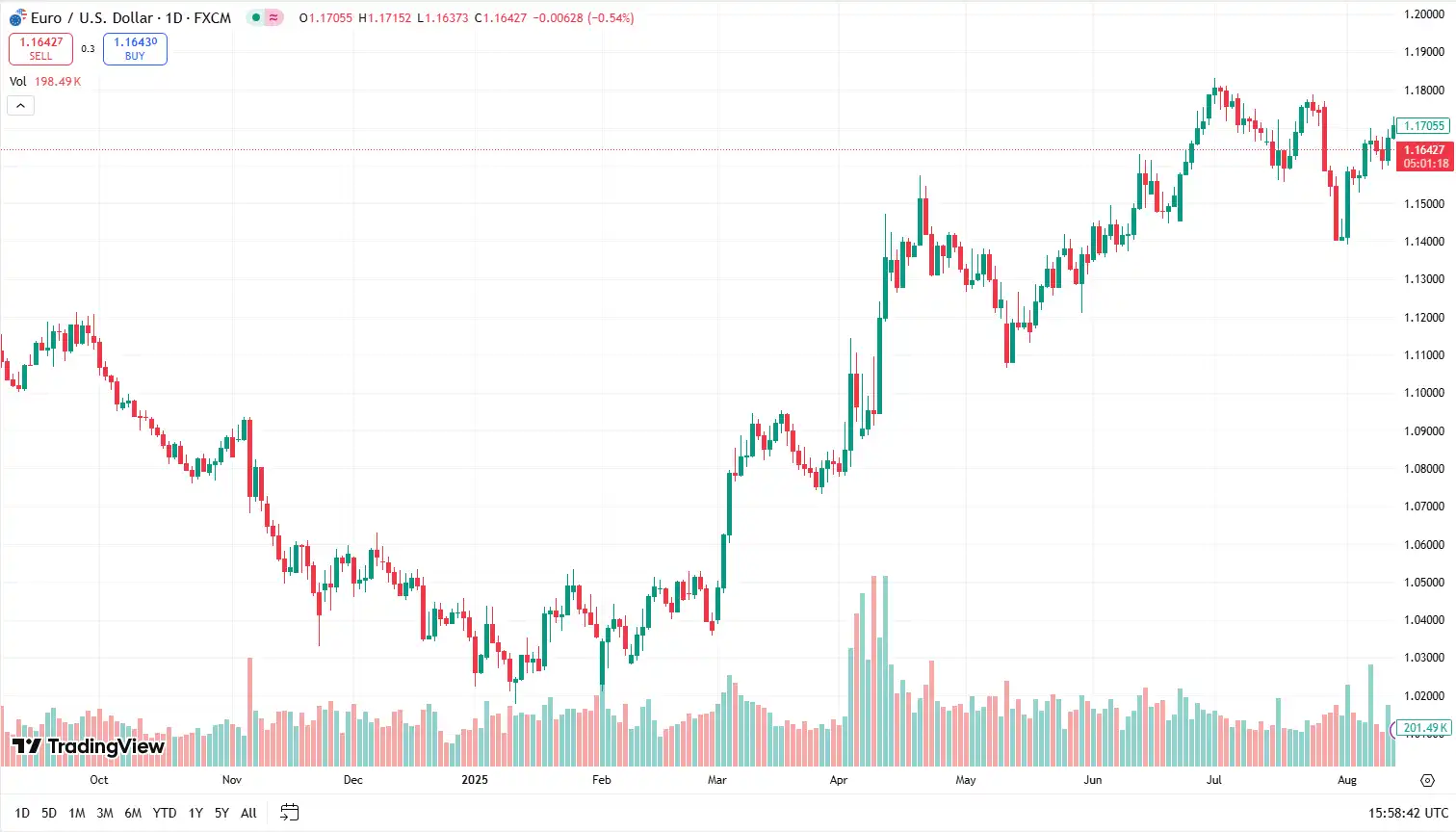
USD/CAD Falls on Fed Rate Cut Bets and Stable Oil Prices
The USD/CAD pair traded above 1.3760 early in Asian trading on Thursday. The weakening of the US Dollar was brought about by the anticipation of interest rate cut shortly by the Federal Reserve (Fed) most likely by 25 basis points within September with 94% probability reflected on the futures. In the meantime, stable oil prices lend strength to the Canadian Dollar as the nation is a big exporter of oil to the US, which contributes to the pair trading with a downside.
According to U.S. Treasury Secretary Scott Bessent, the present Federal Reserve interest levels are not right and should be dropped to 1.5%-1.75% as opposed to the 4.33% the present rate stands. He indicated that the Fed could also cut even longer than usual, so it could reasonably cut rates by 0.50% in September, just to give a boost to the economy. This action, according to the officials, would be a speedier and greater adjustment compared to the normal rate alterations.
The US President Donald Trump expressed his own paper calculation, implying that the interest rate of the Federal Reserve should be about 1%. He also said that interest rates should be three or four points less as it is today. Trump also remarked that interest rates are merely a theoretical or just a paper number and that there is no strict rule dictating the rate but rather the rate can be increased or decreased due to judgment or the state of the economy.
USD/ CAD exchange rates which approach pressure as the Canadian Dollar (CAD), linked closely with the price of commodities, is propped by stable crude Oil prices. Canada is the greatest exporter of Oil in the United States, hence when there is a stable or increasing Oil prices, the CAD gains, which influences the pair dynamics of USD/CAD.
The West Texas Intermediate (WTI) oil price is fighting back after dropping to a two-month low of 61.35. It is trading some few cents above $62.20 today. An increase in the prices of crude oil follows a risk premium because the markets respond to future negotiations between US President Donald Trump and Russian President Vladimir Putin. Investors believe that the geopolitical tensions may influence oil prices because Trump has not only threatened Russia with serious results but has also added uncertainty by saying that there would be catastrophic consequences against Russia unless Putin stops fighting a war with Ukraine.
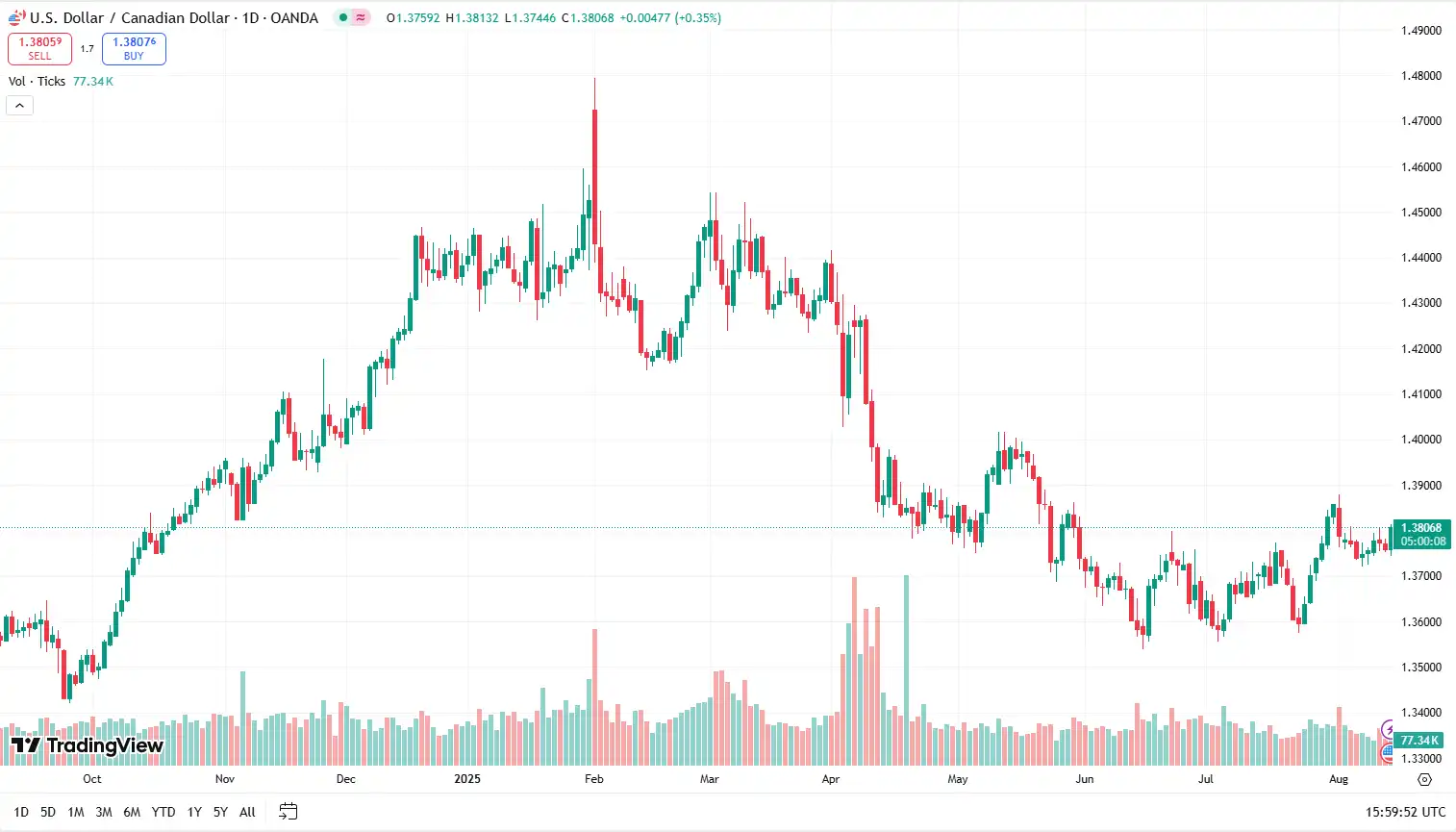
USD/CHF Holds Steady as Markets Await US PPI and Key Breakout Levels
In the European session on Thursday, the USD/CHF currency pair traded around 0.8060. According to the marketers, the two are holding back, in anticipation of the US Producer Price Index (PPI) release of the July figures at 12:30 GMT. The officials believe that this inflation data is awaited by the market and is bound to be higher in producer inflation. This has been a cautious trading which speaks of uncertainty where investors are looking forward to how this action is likely to affect the US dollar and monetary policy action. The sideways trend observed by the two implies minimal volatility in the near future.
According to the economists, producer prices in the United States rose more rapidly in July than they did in June. They believe that the overall, and core producer price indexes, may influence by 0.2% month-on-month, following June when they recorded no growth. The investors are watching the shifts as an indication of a growing pressure of inflation in terms of output, which in future may affect the prices of consumers.
The US Dollar Index (DXY), which tracks the US Dollar against a basket of six major world currencies, is trading relatively cautiously close to a two week low at 97.60. Such wariness is due to investors waiting on the release of future US Producer Price Index (PPI) statistics, due to confusion in the direction of inflation and Fed rate changes.
A slowing labour market and limited effects of tariffs on inflation have seen the US Dollar weakened as people anticipate that the Federal Reserve could lower interest rates during its September meeting. In Switzerland, pressure on inflation below the 2% target considered by the Swiss National Bank has heightened hopes that the interest rates may even go negative. The USD/CHF currency pair is presently trading in a tighter range around the 20-day exponential moving average of approximately 0.8054, and this is in accordance to a sideways movement without a possible direction.
The Relative Strength Index (RSI) being between 40 and 60 after 14 days demonstrates that the market is at rest or with low volatility. Analysts believe that once the price drops below the July 1 low of 0.7872, there is imminent likelihood that the price would go lower to 0.7850 and even as low as 0.7800. But should the price rise to above the August 1 high of 0.8170, it could venture up to the June 19 high of 0.8215 and thereafter the June 6 high of 0.8248. Global observers, as a widely endorsed concept, believe that further actions will be determined by the level of keys that breaks first.
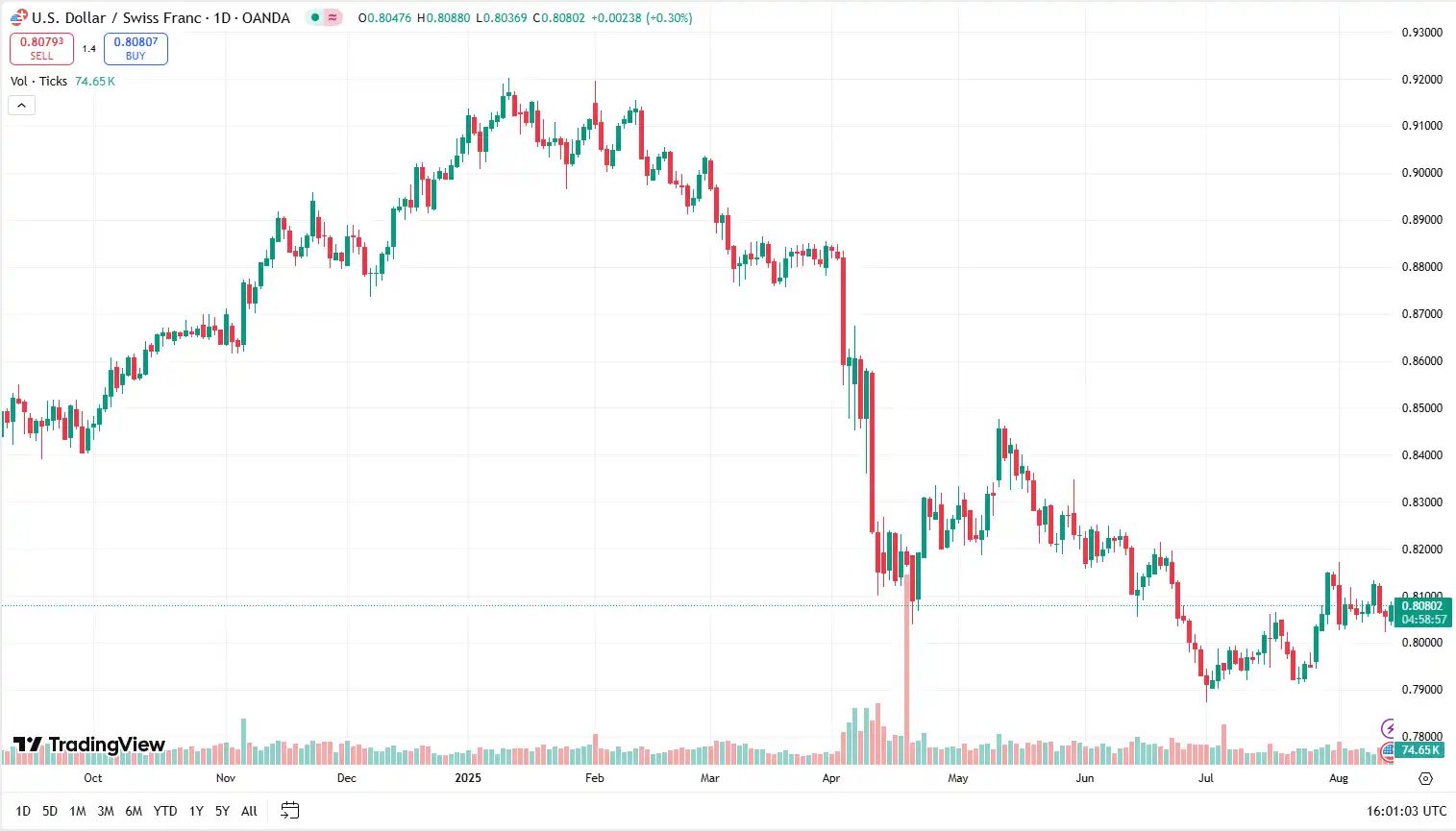
Stay Ahead in the Currency Game
Whether you're a daily FX trader or handle international transactions regularly, our 'Currency Pulse' newsletter delivers the news you need to make more informed decisions. Receive concise updates and in-depth insights directly in your LinkedIn feed.
Subscribe to 'Currency Pulse' now and never miss a beat in the currency markets!
Ready to act on today’s insights? Get a free quote or give us a call on: +44 (0)20 7740 0000 to connect with a dedicated portfolio manager for tailored support.
Important Disclaimer: This blog is for informational purposes only and should not be considered financial advice. Currency Solutions does not take into account the investment objectives, financial situation, or specific needs of any individual readers. We do not endorse or recommend any specific financial strategies, products, or services mentioned in this content. All information is provided “as is” without any representations or warranties, express or implied, regarding its accuracy, completeness, or timeliness.




